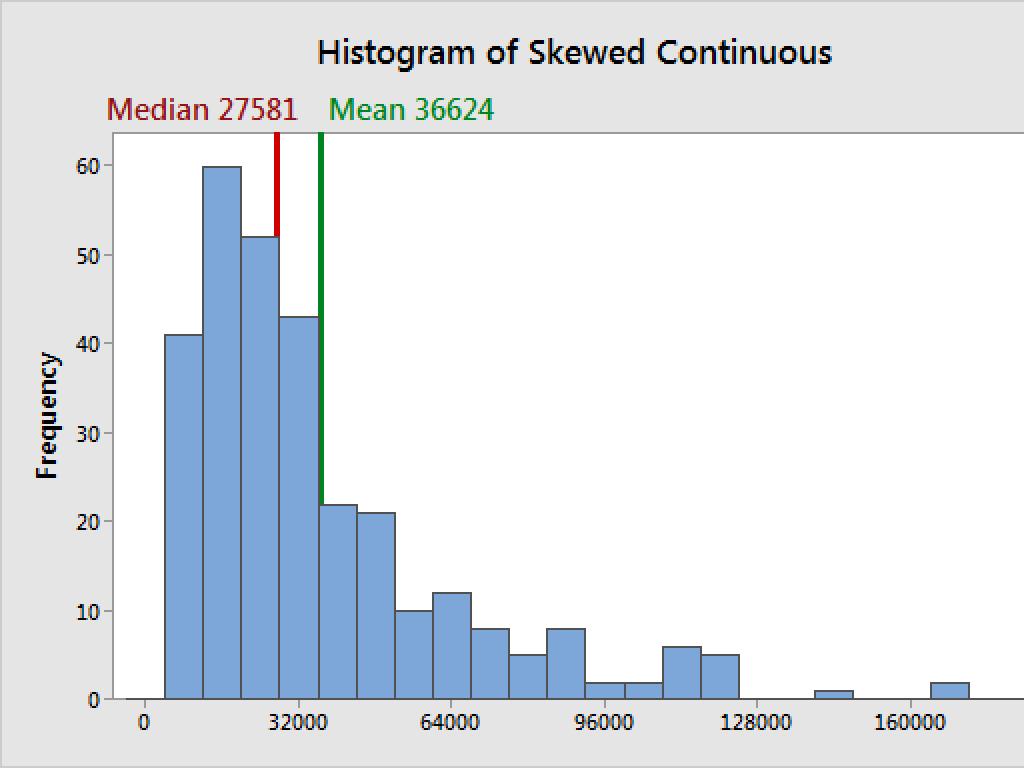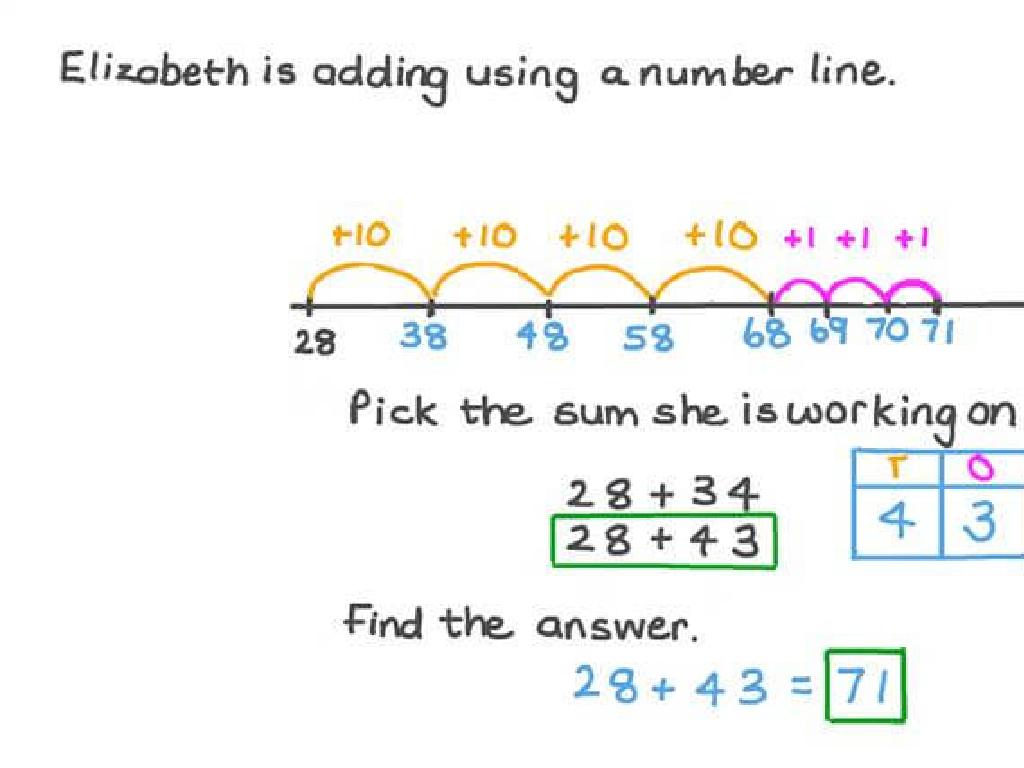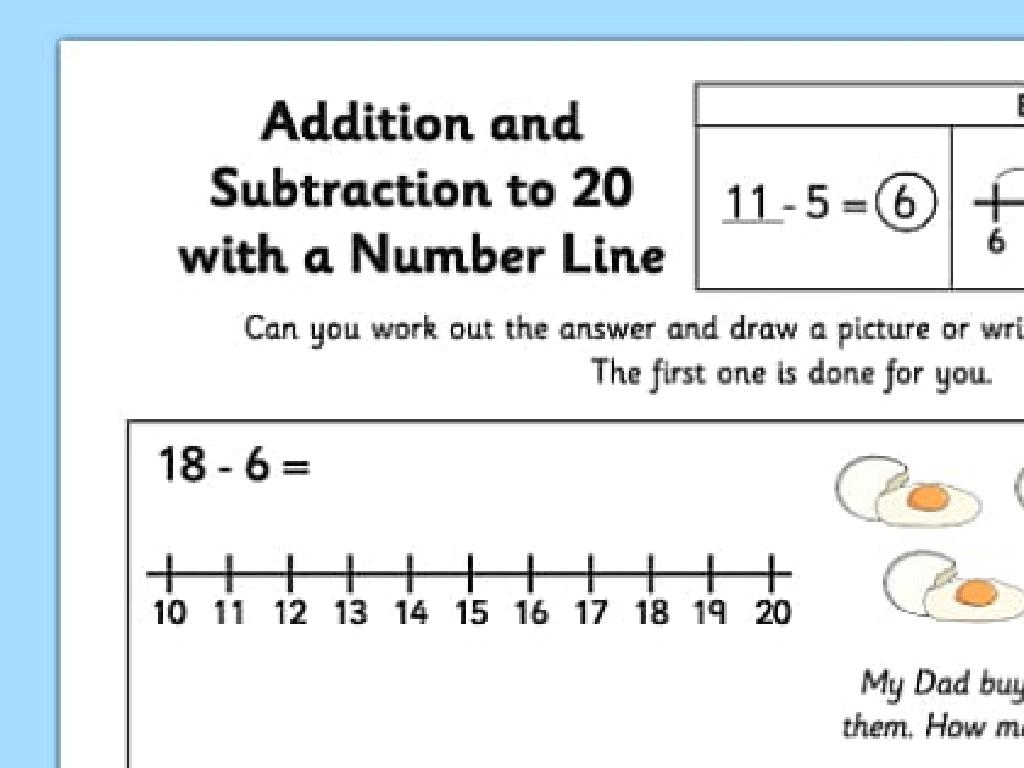Put Numbers Up To 100 In Order
Subject: Math
Grade: Second grade
Topic: Comparing And Ordering
Please LOG IN to download the presentation. Access is available to registered users only.
View More Content
Math Explorers: Putting Numbers in Order!
– Understand numbers up to 100
– Counting from 1 to 100 helps us see the pattern.
– Learn why order matters
– Ordering helps with organization and planning.
– Daily life examples
– For example, lining up by height or numbers on a calendar.
– Practice ordering numbers
– We’ll arrange numbers from smallest to largest.
|
This slide introduces the concept of ordering numbers, which is a fundamental skill in mathematics and daily life. Start by ensuring the students are comfortable with recognizing and counting numbers up to 100. Discuss why having numbers in order is crucial, such as in organizing things or planning events. Provide relatable examples like arranging objects by size or understanding dates. Engage the class with hands-on activities where they can practice putting groups of numbers in order, reinforcing the concept through practical application. Encourage students to think of other areas where numbers need to be in order and share their ideas.
Ordering Numbers Up to 100
– What is number ordering?
– Arranging numbers based on size
– Comparing to a race lineup
– First, second, third places in a race
– Ordering from smallest to largest
– Start with the smallest number
– Ordering from largest to smallest
– Start with the largest number
|
This slide introduces the concept of ordering numbers, which is a fundamental skill in mathematics for second graders. Explain that ordering numbers is like sorting things based on their size, and it can be done in two ways: from the smallest to the largest (ascending order) or from the largest to the smallest (descending order). Use the analogy of a race where participants finish in a specific order to help students visualize the concept. Encourage students to think of numbers as runners in a race and decide which would come first, second, third, etc. Provide examples using numbers up to 100 and ask students to practice ordering sets of numbers both ways. This will prepare them for activities during the lesson where they will apply these concepts.
Numbers All Around Us
– Organize toys by number at home
– Sort toys from 1 to 10 or more
– Arrange price tags in order at the store
– Line up prices from least to greatest
– Count petals on flowers in nature
– Find flowers and count petals, compare with friends
– Practice putting numbers up to 100 in order
|
This slide aims to show students that numbers are a part of everyday life and can be practiced outside of the classroom. Encourage them to organize their toys in numerical order to understand sequencing. When visiting a store, they can observe price tags and try to arrange them mentally from the lowest to the highest price. In nature, counting petals can be a fun activity to see numbers in the world around them. These activities will help reinforce their ability to order numbers up to 100 and recognize patterns in everyday contexts. Make sure to provide examples and guide them on how to start recognizing and comparing numbers in different settings.
Let’s Practice Ordering Numbers!
– Example: Order 5, 20, 10, 15
– Which is smallest: 5, 20, 10, or 15?
– Find the smallest number
– After 5, is 10 or 15 smaller?
– Find the next bigger number
– Keep going! What comes after 10?
– Continue until the largest
|
This slide is designed to help students practice the skill of ordering numbers from smallest to largest. Start with a clear example, using numbers that are familiar to second graders. Encourage them to identify the smallest number first, which is the foundation for ordering. Then, guide them to look for the next larger number, step by step, until they have ordered all the numbers. This incremental approach helps build their understanding of number sequences. In class, you can use number cards or interactive games to make this activity hands-on. For homework, assign a similar exercise with different numbers or have them order objects by size or quantity to reinforce the concept.
Ordering Numbers Up to 100
– Use a 100 chart for number order
– A 100 chart shows all numbers from 1 to 100. It helps us see how numbers line up.
– Find patterns to order numbers
– Look for patterns like counting by 2s, 5s, or 10s to make ordering numbers simpler.
– Practice ordering with examples
– Try arranging 14, 29, 37, and 58 in order using the chart.
– Understand number positions
– Knowing where a number is on the chart helps us understand its place in the order.
|
This slide introduces second-grade students to the concept of ordering numbers up to 100. The 100 chart is a valuable visual aid that helps students see the sequence of numbers and understand their relative positions. Encourage students to identify and use patterns such as skip counting to arrange numbers in order. Provide practice examples and guide them through the process of ordering numbers using the chart. Emphasize the importance of recognizing where a number falls on the chart to determine its order among other numbers. Activities can include ordering number cards, playing number line games, and filling in missing numbers on a chart.
Group Activity: Number Sorting Game
– We will form small groups
– Each group receives number cards
– Collaborate to sequence numbers
– Discuss with your group to decide the order
– Ensure all numbers are in order
– Check if the sequence starts at the smallest number and ends at the largest
|
This interactive group activity is designed to help second-grade students understand the concept of ordering numbers up to 100. Divide the class into small groups and provide each group with a set of number cards. Instruct the students to work together to arrange the cards in ascending order. This activity encourages teamwork and communication while reinforcing their ability to compare and order numbers. As a teacher, circulate around the room to guide groups who may need help. Possible variations of the activity could include timing the groups for a friendly competition, having students explain their sorting strategy, or introducing ‘mystery numbers’ where students have to determine the missing cards in a sequence.
Class Activity: Number Line Creators
– Create a paper number line
– Place numbers in correct order
– Numbers should ascend from left to right
– Ensure numbers go up to 100
– Check that 100 is the last number on the right
– Share your number line
– Explain your number line to classmates
|
This activity is designed to help students understand numerical order up to 100. Provide each student with paper and markers to create their own number line. Guide them to place numbers starting from 1, ensuring they are in the correct ascending order. Emphasize the importance of spacing and sequence. Once completed, each student will share their number line with the class, explaining the order of numbers. This reinforces their understanding and allows them to practice counting. For differentiation, some students can be challenged to include skip counting or to identify even/odd numbers on their line.
Conclusion: Ordering Numbers Up to 100
– Importance of number order
Ordering helps in counting, comparing, and understanding value.
– Using a 100 chart
A 100 chart shows patterns and helps us see the order clearly.
– Practice makes perfect
– Celebrating our Math Explorers
You’ve all done an amazing job learning today!
|
As we wrap up today’s lesson, emphasize the importance of understanding the order of numbers, which is crucial for basic math skills such as counting, comparing quantities, and performing arithmetic operations. Reinforce how a 100 chart can be a visual aid to help students see numerical patterns and assist them in placing numbers in the correct order. Acknowledge the effort the students have put into learning and practicing these concepts. Encourage them to continue practicing at home with their own 100 charts. Celebrate their achievements as ‘Math Explorers’ to build their confidence and excitement for future math adventures.






